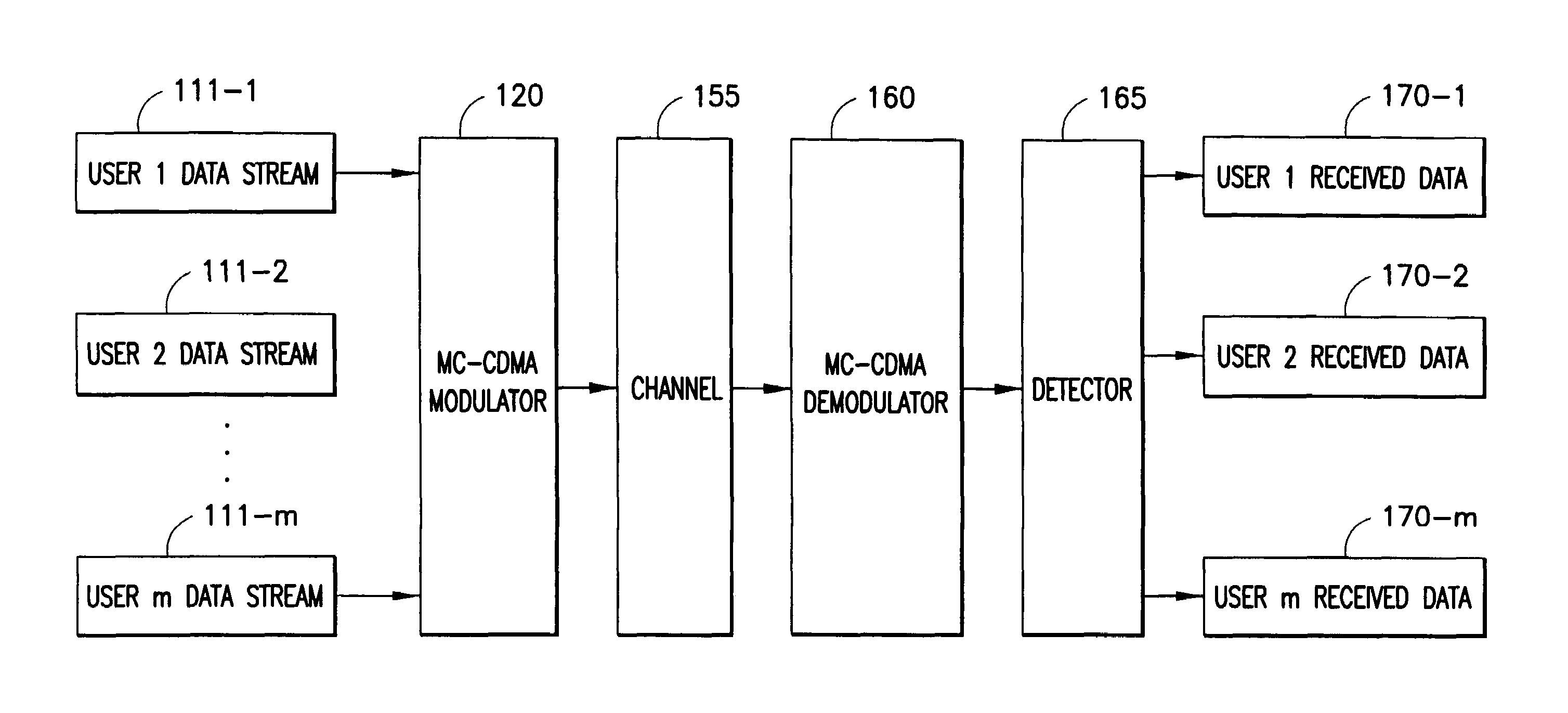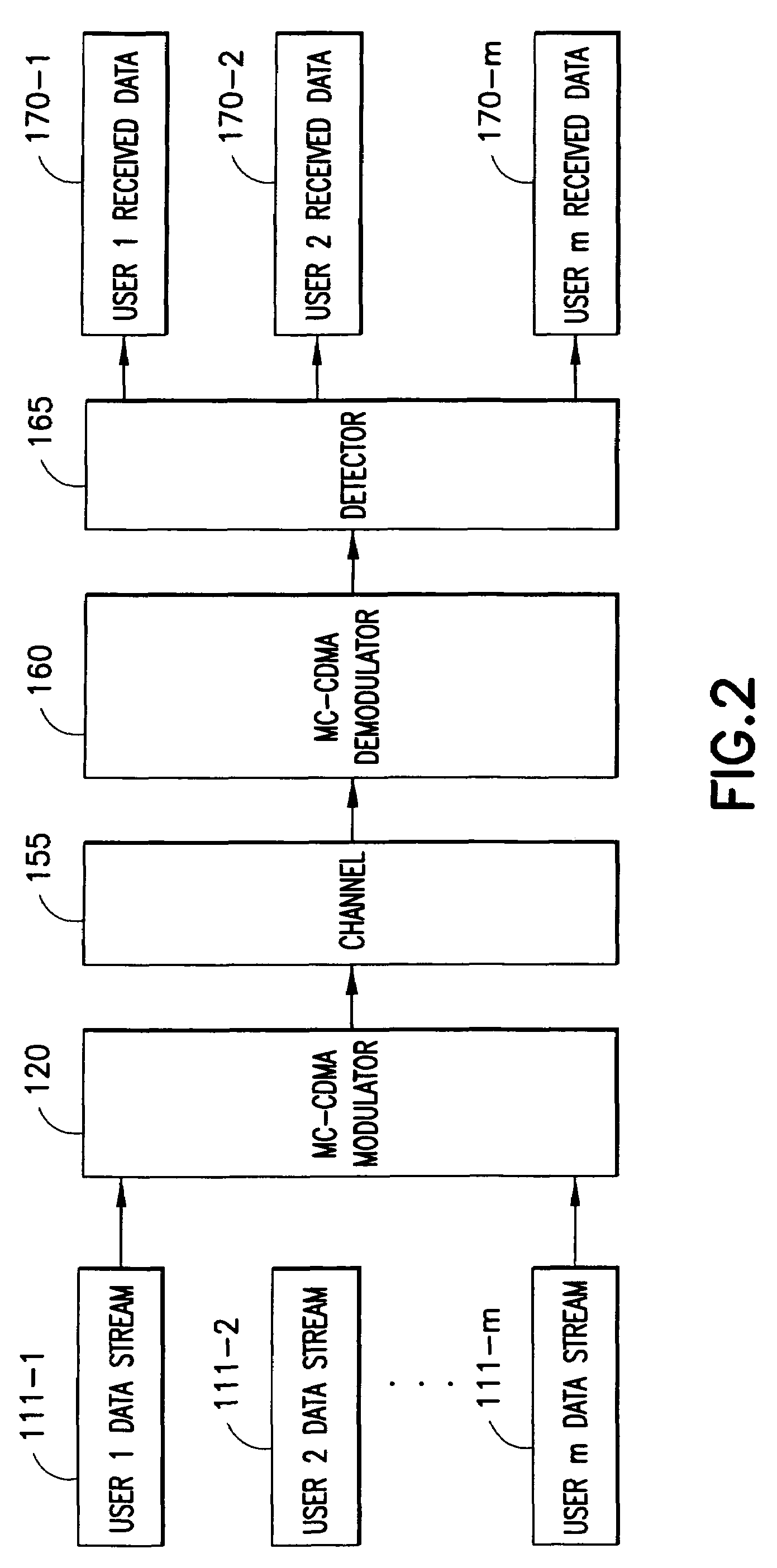Multiple user adaptive modulation scheme for MC-CDMA
a multi-user adaptive modulation and multi-user technology, applied in the field of wireless communication, can solve the problems of synchronization problems, sub-carrier allocation that works for one user does not necessarily work, or even makes sense, and achieves the effect of preserving synchronization
- Summary
- Abstract
- Description
- Claims
- Application Information
AI Technical Summary
Benefits of technology
Problems solved by technology
Method used
Image
Examples
Embodiment Construction
[0025]The invention is concerned with adaptive bit loading schemes for multi-user downlink MC-CDMA systems that employ frequency domain spreading. To insure synchronization between the users' chips, a configuration is suggested in which the sub-carriers are divided into groups of sub-carriers, and the spreading of an user modulated symbol is confined within a group of sub-carriers.
[0026]For the explicit use of adaptive modulation and resource allocation of bits and power, an analytical expression for the instantaneous SNR of a group of sub-carriers is derived. From the expression an effective channel function may be evaluated for each group of sub-carriers, and each group may then be interpreted as an equivalent sub-carrier of a conventional OFDM modem. The group of sub-carriers is then allocated to a modulated and coded data symbol in the same way as if they were a single OFDM sub-carrier. Those skilled in the art will appreciate that various forms of coding are available to the sy...
PUM
 Login to View More
Login to View More Abstract
Description
Claims
Application Information
 Login to View More
Login to View More - R&D
- Intellectual Property
- Life Sciences
- Materials
- Tech Scout
- Unparalleled Data Quality
- Higher Quality Content
- 60% Fewer Hallucinations
Browse by: Latest US Patents, China's latest patents, Technical Efficacy Thesaurus, Application Domain, Technology Topic, Popular Technical Reports.
© 2025 PatSnap. All rights reserved.Legal|Privacy policy|Modern Slavery Act Transparency Statement|Sitemap|About US| Contact US: help@patsnap.com



